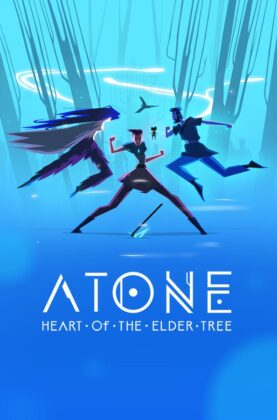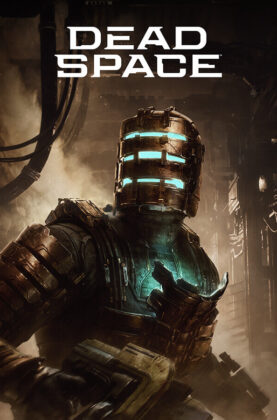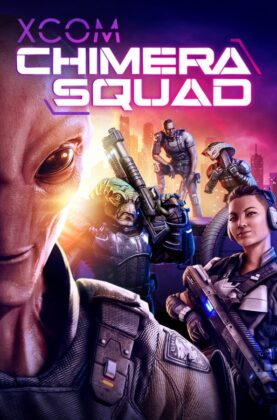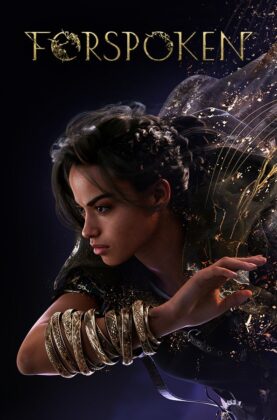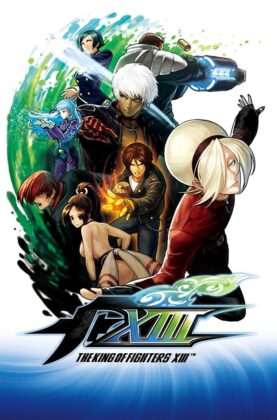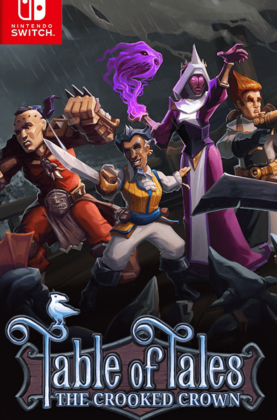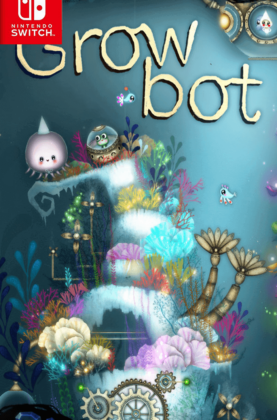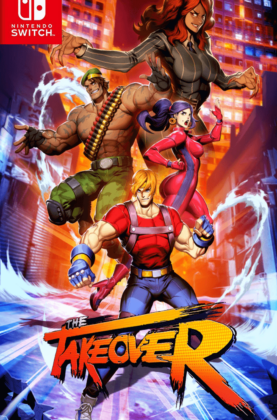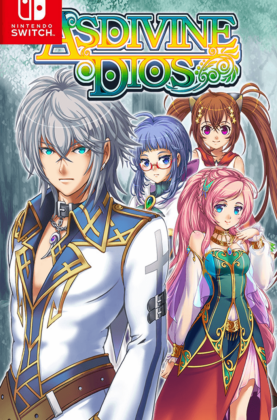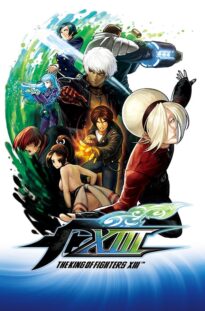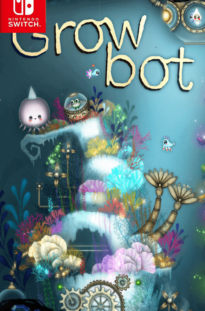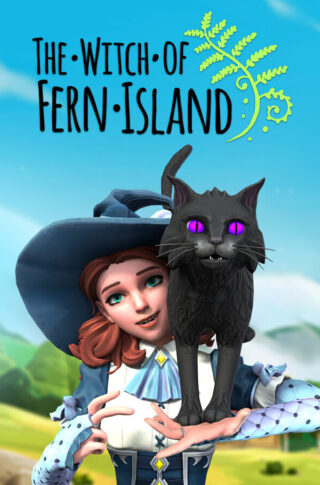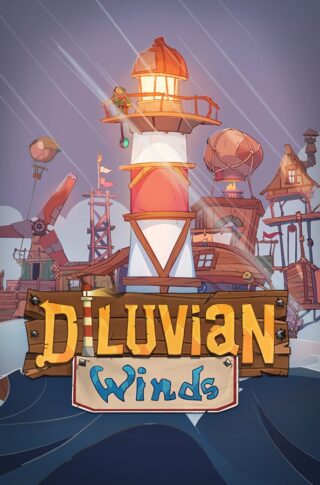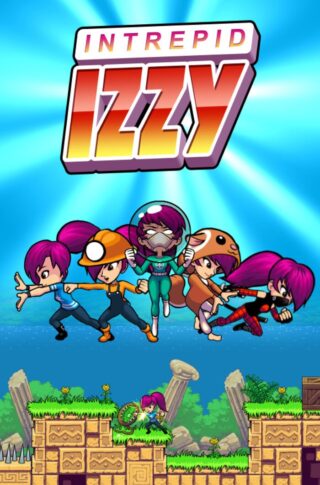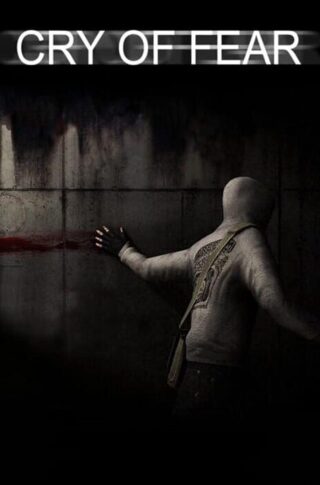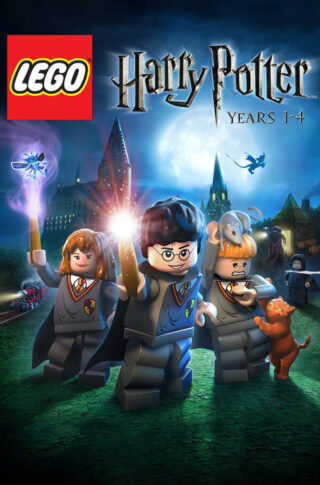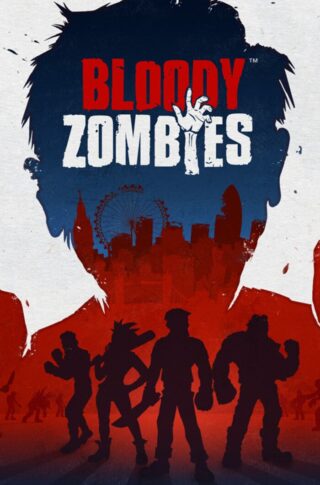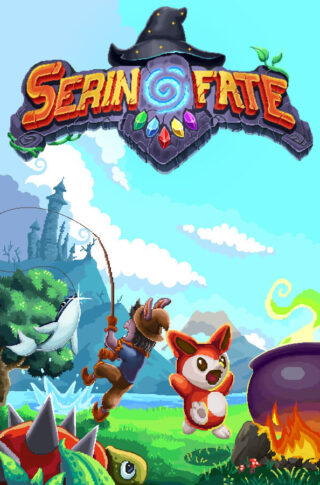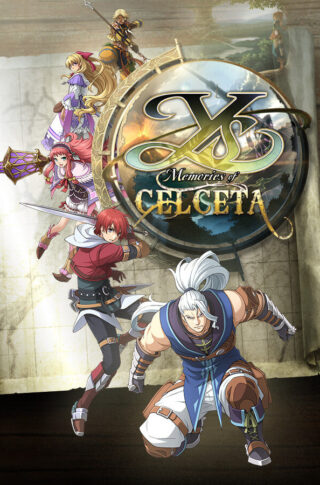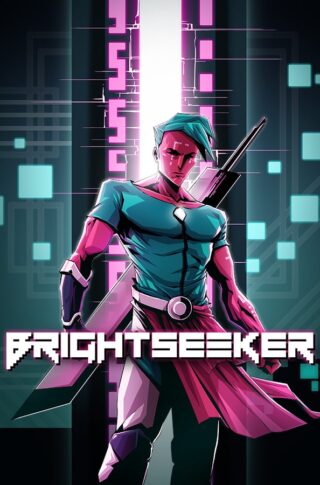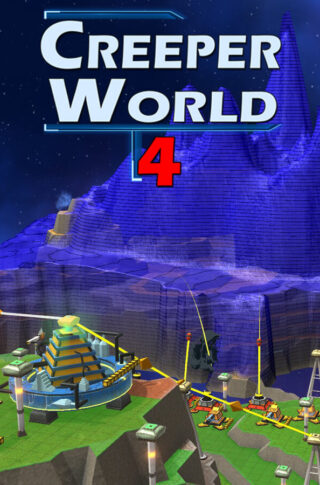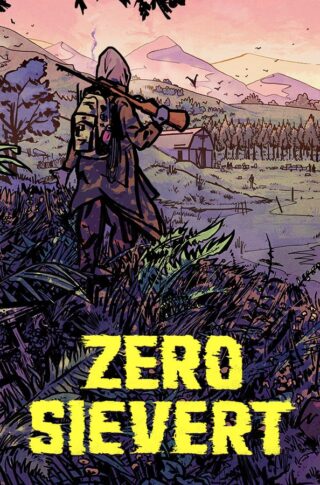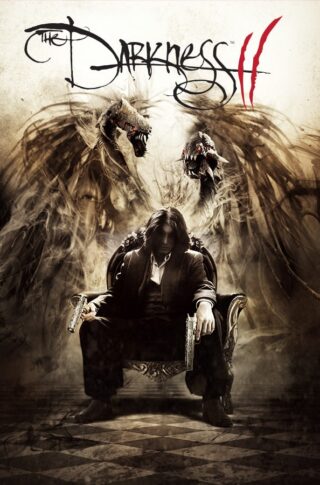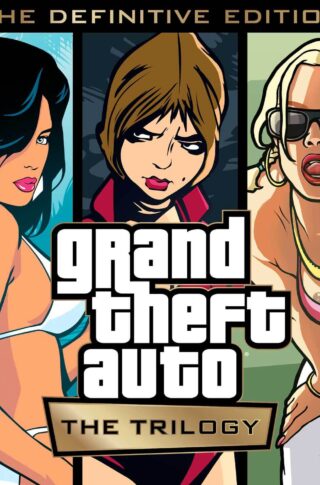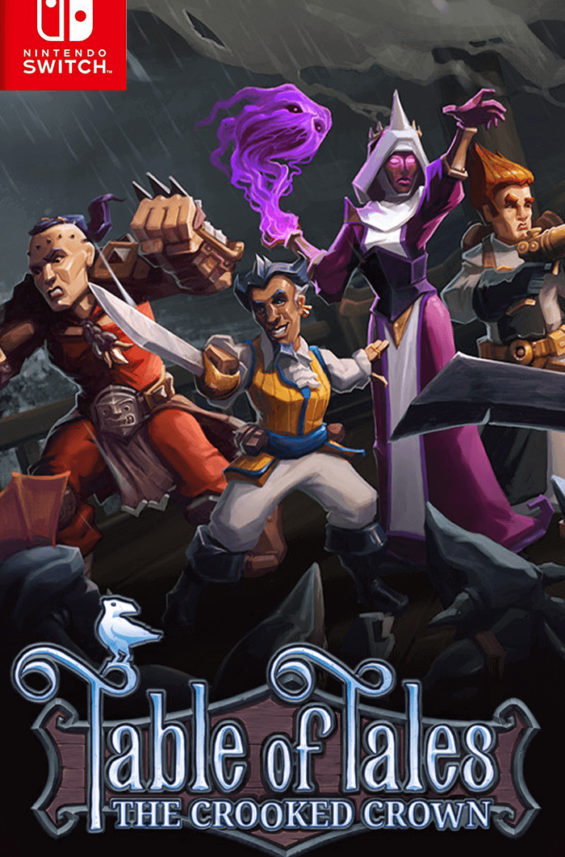
Table of Tales: The Crooked Crown Switch NSP Free Download
Table of Tales: The Crooked Crown Switch NSP Free Download Unfitgirl
Table of Tales The Crooked Crown Switch NSP Free Download Unfitgirl Going way, way back into the history of video game RPGs, the original goal of developers was to take the pen and paper experiences that so many people loved through the 70’s and 80’s (most notably through Dungeons & Dragons), and then give them the chance to have that experience without needing to get a group of friends together for an evening. It took the advent of VR to finally realise that early goal. I’ve been playing Dungeons & Dragons since I was five. That’s 30-odd years now. I love it to this day as much as I did when I first played. That alone should tell you how much I love Tin Man Games’ Table of Tales. This is not to say that video game RPGs have been an inferior experience. Rather, it’s to acknowledge that whatever the intent was with those first RPGs, the genre has spun in its own direction and now offers something entirely different, using the strengths of the video game medium to deliver worlds and experiences that pen and paper RPGs cannot. With that being said, as much as I love my Final Fantasies and Dragon Ages, it has been so exciting to play something that sticks to those lofty goals from way back when. One area that video games have never been able to effectively deliver is in giving players a sense of the tactility of a physical game. The experience of staring down at a table, with pieces and dice arrayed around, and being able to touch the action. Unfitgirl.COM SEXY GAMES
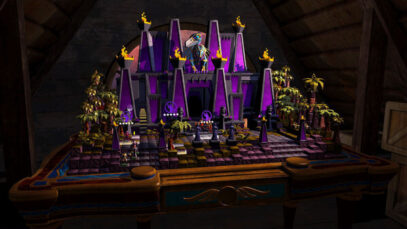
It can be messy – you throw dice at the wrong angle and pieces go flying. In the middle of an intense combat, moving your piece, surrounded by enemies, would bump them all around. In many ways it is a primitive way to play, but imperfect as it is means that it is also a deeply human way to play. That is something that the distancing effect of a screen, coupled with the necessary precision of video game development, has never been able to properly recreate. With VR, however, that inhibition is thrown away, and Tin Man Games has been able to place you directly and physically into the action. Table of Tales’ playing field is largely static. Scenery pops up and is cleared away as the setting changes, but that static design is deliberate, to make it look like a series of boards arrayed over a table top, and the pieces are, just like physical playing pieces, inanimate. With such a “limited” set up, the development team at Tin Man Games has not been able to use facial expressions or movement to tell its story. Further, as habitual VR players all know, reading text for long periods isn’t ideal with the googles on either. Because of that, the team has not been able to rely on the same fallbacks that many RPGs have over years – neither cinematic cut scenes nor large blocks of text would have worked here.
Instead, Tin Man Games has simply given us a proper, bona fide dungeon master.
The magical table transforms
A gorgeously-rendered jeweled bird hops around the board as you play Table of Tales, relaying the story – complete with the performative acting of different voices to represent different characters – and by providing a running commentary of the combat and dramatic events, it paints vivid pictures of exciting, heroic action to go with the static boards. It is a spot-on recreation of the best pen-and-paper RPG experiences and dungeon master performances. And it’s impossible not to be delighted by it if you have had any experience with pen-and-paper games in the past. Mechanically, Table of Tales is quite simple. Where Dungeons & Dragons gives you pages of statistics to manage your character with, that, too would have been too much reading and busywork for a VR experience. The solution Tin Man Games has come up with is delightful. While I’m stretching deep into 90’s nostalgia to say this (sorry, younger readers), anyone who remembers Hero Quest will have a good sense of the way character development works in Table of Tales. All character statistics are distilled down to what can fit on a single card. When characters level up, they get a couple of extra abilities to play with, and that’s it. It might initially seem simplistic, but what’s ultimately important with this kind of game (and certainly applied to Hero Quest) is that each character has their own unique play style (they do) Getting Over It with Bennett Foddy
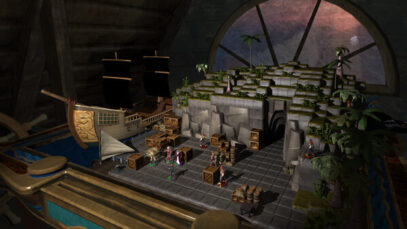
And that the variety of combat scenarios and non-combat skill tests is nicely varied so that everyone gets their moment to shine (it is). You can learn to play Table of Tales in about five minutes, irrespective of your experience with pen-and-paper RPGs or video game RPGs. Actually completing the game is a stiffer challenge, however, thanks to the depth that Tin Man Games has managed to squeeze out of its systems. The one area where Table of Tales hasn’t perfectly emulated the pen-and-paper experience is the inability for players to play an active participation role in the storytelling. I don’t think there has been a single time I’ve played Dungeons & Dragons where the players have failed to make decisions that completely derail the careful plans of the DM. Perhaps the party don’t go hunting for the magical artefact that they’re meant to. Perhaps they decide to form an alliance with the villain at the base of a dungeon. Perhaps they “accidentally” kill an allied prince and render themselves enemies of the state. One of the great things about pen-and-paper RPGs is that there’s a storytelling loop in the performance where the actors (the players) have an equal role in writing the stories as the playwright (DM) does. The infinite number of decisions that a party of people might make, and the capacity for a DM to compensate to keep the story cohesive is a big part of the fun of pen-and-paper gaming. That is, of course, impossible for a video game.
The Warlock of Firetop Mountain
Table of Tales offers yet another elegant solution, familiar to anyone who has played a Tin Man Games title in the past. The narrative decision making is structured as a gamebook, where players frequently come up against a binary (or sometimes, three or four-pronged) decision to make. There’s no right or wrong in these decisions, but each offers the player benefits and negatives, and slightly adjusts the narrative flow that they’ll subsequently experience. The good news is that those decisions are often intriguing enough to justify additional play throughs, further extending the life of a game that, like a good Dungeons & Dragons adventure, is already eminently replayable. Tin Man Games could, in theory, make versions of Table of Tales that don’t utilise VR, for release on Nintendo Switch, the iPad and other tablets, and to give people with PCs and consoles, but no VR, a chance to play the game. Doing so would make Table of Tales look and feel very much like the equally-excellent Warlock of Firetop Mountain, which has been doing the rounds for some time now, so it would still work, as such. But that (currently) hypothetical release would also lack the sense of presence that really elevates the aesthetic and experience of Table of Tales. If you can, you owe it to yourself to play this in VR, regardless of what other versions might make arrive down the track. Ghostrunner PC
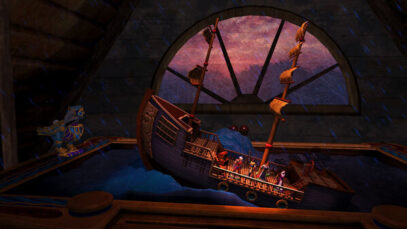
Table of Tales offers a brilliantly modular opportunity to Tin Man Games. As long as it’s commercially successful (and I certainly hope it is), it’s easy to imagine the developer releasing additional adventures, chapters, and tales to this base package… much like how Dungeons & Dragons uses its core rulebooks to give you all the tools you need to play one heroic adventure after another, to the point where the world that the storyteller creates, and that players interact with, grows to become secondary homes of the imagination. That Tin Man Games has managed to take the newest of video game technologies to deliver something so perfectly nostalgic that it predates video games entirely. Somehow, that also makes Table of Tales the most impressive application of VR that doesn’t let me get up on stage with Hatsune Miku and dance with her. The eponymous table is the stage for a tabletop RPG. No need to worry about spending weeks of frustration trying to sync the schedules of a group of players for this one, though. The action literally unfolds before you by itself including the environments, characters, and props rising and falling from the table as the story progresses (a bit like the Game of Thrones intro sequence). Narration meanwhile is provided by a mechanical bird by the name of Arbitrix, who acts as the Game Master.
Battle, charm or sneak
I suspect she’s meant to sound like a pirate; but to British ears, she sounds more like a farmer. Each character is a semi-animated game piece. You play the game much as you would a real-life board game, something that never loses its appeal. Action is turn-based and on your turn you reach down to the table, and pick up the character you want to use. Place them where you want them to go if needed, then choose their action. This is done by selecting one of a small number of cards on the edge of the table, and confirming by touching the character with the card. Simple, yet satisfying. There are (of course) all sorts of people and creatures to slay on your way to the end of the story but, in true tabletop RPG fashion, there are plenty of choices to be made, too. You’ll regularly be faced with a situation where combat is but one of several options, or may not even be an option at all. This is where your characters’ stats, such as Strength and Charm, come into play. Perhaps you’ll try to charm a character onto your side, or use brute strength to break something in your way. A number of stars above the relevant option shows the total number of points necessary for success, which will almost always be above the capabilities of even your most suitable character. You’ll therefore need to roll the dice – both literally and figuratively – on your action of choice. Ghosts ‘n Goblins Resurrection Switch NSP
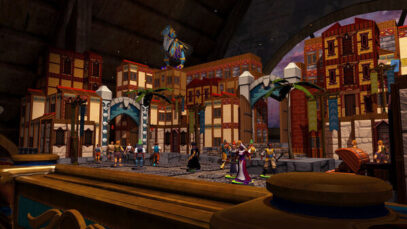
There are no ‘wrong’ choices, only alternate paths for your story to take. Although I assume (as this didn’t happen to me) losing all your characters in a fight results in a Game Over, failing a chosen interaction doesn’t bring the game to a halt. It probably means that you’ll have a more difficult fight ahead of you, but the story continues. This is just one way in which Table of Tales enthusiastically encourages repeat playthroughs. Sure, you can wonder what might have happened if you’d succeeded in that failed attempt. But what if you’d gone for one of the other available options? What if you’d gone done path A rather than path B a few stages ago? What scene would have played out there? That NPC that joined your crew… you lost them in battle. But what if you’d looked after them a little better, and they survived until the end? You failed to convince that character to help you just now, but what if you’d managed to get them to believe you? And so on. There are so many brief yet interesting avenues for the story to explore, the game stands up extremely well to at least a few extra playthroughs, offsetting the modest playtime of roughly two and a half hours. The members of your motley crew are known as the ‘Scoundrels’, and they certainly lived up to the name in my first run through. Two of my temporary allies died, I betrayed an alliance I’d forged, and left an entire island of people to their deaths. Oops! None of that had to happen, though.
There’s a neat, vaguely Neverending Story or The Princess Bride atmosphere, and moment-to-moment gameplay moves along nicely; but it’s not for everyone. The presentation and storytelling are distinctly kid-friendly (with one odd exception I came across, the use of the word “bastards”). There’s absolutely nothing wrong with that in and of itself, but in this case it means weak and toothless humor and a predictable, often derivative plot. In addition, combat only allows for limited scope when it comes to tactics. Movement and actions are based on action points, so thinking is definitely required, though the simplicity is a double-edged sword. While some will appreciate the limited number of combat cards, and the fact that attacks never miss, others will doubtless pine for something more complex and deep. PSVR has really come into its own in recent years, and Table of Tales is a flawed yet unique jewel in its crown. The simple act of playing an animated board game in virtual reality is compelling, strengthened by liberally sprinkling the game with some very clever choices for the player. If you’re looking for something new that emphasizes entertainment over challenge, this is for you.
Add-ons (DLC):Table of Tales: The Crooked Crown Switch NSP
| – | – | – | – | – | – |
| – | – | – | – | – | – |
| – | – | – | – | – | – |
| – | – | – | – | – | – |
OS: 64-bit Windows 10 or MacOS 10.15: Catalina (Jazz)
Processor: Intel Core i7-4790 or AMD Ryzen 3 3600
Memory: 12 GB
Graphics Card: RTX 2080S/RTX 3070 or AMD Radeon RX 6800 XT
VRAM: 8 GB
Storage: SDD (977 MB)
INPUT: Nintendo Switch Joy con, Keyboard and Mouse, Xbox or PlayStation controllers
ONLINE REQUIREMENTS: Internet connection required for updates or multiplayer mode.
Requires a 64-bit processor and operating system
NOTE: THESE STEPS MAY VARY FROM GAME TO GAME AND DO NOT APPLY TO ALL GAMES
- Open the Start menu (Windows ‘flag’ button) in the bottom left corner of the screen.
- At the bottom of the Start menu, type Folder Options into the Search box, then press the Enter key.
- Click on the View tab at the top of the Folder Options window and check the option to Show hidden files and folders (in Windows 11, this option is called Show hidden files, folders, and drives).
- Click Apply then OK.
- Return to the Start menu and select Computer, then double click Local Disk (C:), and then open the Program Files folder. On some systems, this folder is called ‘Program Files(x86)’.
- In the Program Files folder, find and open the folder for your game.
- In the game’s folder, locate the executable (.exe) file for the game–this is a faded icon with the game’s title.
- Right-click on this file, select Properties, and then click the Compatibility tab at the top of the Properties window.
- Check the Run this program as an administrator box in the Privilege Level section. Click Apply then OK.
- Once complete, try opening the game again
NOTE: PLEASE DOWNLOAD THE LATEST VERSION OF YUZU EMULATOR FROM SOME GAMES YOU MAY NEED RYUJINX EMULATOR
- First you will need YUZU Emulator. Download it from either Unfitgirl, .. Open it in WinRar, 7ZIP idk and then move the contents in a folder and open the yuzu.exe.
- There click Emulation -> Configure -> System -> Profile Then press on Add and make a new profile, then close yuzu
Inside of yuzu click File -> Open yuzu folder. This will open the yuzu configuration folder inside of explorer. - Create a folder called “keys” and copy the key you got from here and paste it in the folder.
- For settings open yuzu up Emulation -> Configure -> Graphics, Select OpenGL and set it to Vulkan or OpenGL. (Vulkan seems to be a bit bad atm) Then go to Controls and press Single Player and set it to custom
- Then Press Configure and set Player 1 to Pro Controller if you have a controller/keyboard and to Joycons if Joycons. Press Configure and press the exact buttons on your controller After you’re done press Okay and continue to the next step.
- Download any ROM you want from Unfitgirl, .. After you got your File (can be .xci or .nsp) create a folder somewhere on your PC and in that folder create another folder for your game.
- After that double-click into yuzu and select the folder you put your game folder in.
- Lastly double click on the game and enjoy it.

